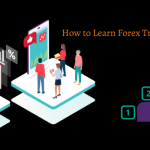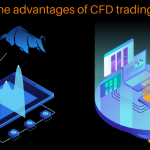Futures Forex Trading

![]()
The forex market, with an average daily trading volume of 6.6 trillion dollars, is the biggest financial market in the world. There are many trading instruments available in this market. Forex futures are one derivative security that fits this description. It is known that 112 billion US dollars are traded in a single day in the Forex futures market. You might learn more about forex futures and how to trade them by reading this blog.
What are Forex Futures Contracts?
A Forex futures contract is a typical contract between a seller and a buyer to sell or purchase a currency pair. At a predetermined date, time, and size, just like a standard futures contract. This contract is the most widely use one on several Forex exchange marketplaces. Contrary to Forex forward, futures contracts are trade openly, making them subject to regulation, non-customizable in terms of size and settlement, and protected against credit loss by a clearinghouse that serves as an intermediary.
Clearinghouse refers to the process of keeping track of and converting traders’ daily profits and losses into actual money by crediting or debiting their yarding accounts with that amount each day. The phrase “Mark to Market” also applies here. To determine the settlement price for the day, this technique takes the average of the most recent few trades into account.
Forex Futures Trading Requires Margins
Simply put, margin is the amount that traders must deposit as collateral with each Forex futures clearinghouse. In the stock market, margin is typically a loan offer to traders depending on the value of their portfolio to enable them to trade more frequently, but this is not the case with the Forex futures market. You must deposit the initial sum if you want to trade in order to satisfy the minimum margin requirement.
The margin shows that both parties intend to fulfil their contractual obligations in this transaction. There is no borrowing involved in trading Forex futures contracts. In comparison to the stock market, margin requirements for trading in Forex futures are far lower. The foreign exchange futures market has a rate much lower than 10%.
The minimal margin requirements are met by each and every trader of Forex futures. Traders are require to have a specific amount in their account. As margin after daily mark-to-market operations, known as the maintenance margin. A margin call is issue to the trader if a loss happen and the margin amount fall below the maintenance margin. The purpose of the margin call is to request that the trader add funds to your trading account in order to reduce the margin amount to the needed initial amount.
Trading and Speculating
The trading style is determine by the traders’ interests, aspirations, and expectations. Similar to that, entry and departure times and strategies have an impact on trade. Compared to day traders, long-term traders prefer to hang onto positions for far longer periods of time because their core objectives are often postpone.
Day Trader
A day trader can readily enter or leave a position in a matter of minutes and is likely to keep a position overnight. The rate and volume changes that can be observe using technical analysis, such as chart patterns, are the main focus.

Swing Trader
A swing trader, in contrast to a day trader, holds onto a deal overnight and, if necessary, can extend the holding period to a whole month. They apply technical analysis techniques, but swing traders put daily or weekly data into study together with macroeconomic aspects for the near future. This changes the time period of technical research.
Position Trader
The final type of trader are position traders. We can call them fundamental traders as well because they hold a position for weeks or even years. Position traders are the least concerned with everyday profit and loss and look for the bigger picture. They tend to have large stop loss and risk management procedures in place compared to day traders and swing traders.
The aforementioned qualities are not rigid but rather adaptable. Because in the end, it all comes down to the tastes and needs of the traders. Fundamental analysis is another tool that day traders might employ. Such as on the day when the Federal Open Market Committee data is scheduled to be release. In a similar manner, a position trader can choose entry and exit locations using technical analysis. It depends on each trader; a swing trader may keep a position for longer than a month.
Analytical Tools for Forex Futures Trading
The forex market makes use of both technical and fundamental analysis, much like the stock market does. Technical analysis uses price and volume data for analysis. Whereas fundamental analysis takes into account factors like a firm’s in-depth analysis, ratio analysis, industry analysis, etc. An investor needs to be aware with macroeconomic aspects and forecasting concepts in order to do fundamental analysis.
To learn how to trade forex futures, a trader must comprehend a number of variables that affect a country’s currency. These elements may include rates of inflation or deflation, actions performed by central banks, changes in interest rates, business cycles, etc. A forex futures trader also needs to understand about economic indicators. Like the yield curve, GDP, CPI, and information on the job market or the housing market, among others. Though the list doesn’t end here, he or she must also research the reserve levels of various central banks. The current account deficits of other countries, and how these factors relate to the currencies that those countries trade in.
Final Thoughts
Without taking risks, trading cannot be done, and each trader has a different level of risk tolerance. Having the necessary knowledge and abilities to perform and analyze technical as well as macroeconomic data is a must for traders in forex futures trading. It is also important to recognize that different contracts with different features require different understandings. Forex futures trading is particularly alluring due to the liquidity, reduced risk, minimal margin, and controlled transparency. The fact that a reduce margin might result in bigger earnings but also higher loss must be understood by traders.
The way each currency trader participates in the market for currency futures is controll. Ticks are used to characterize the movements, and each tick varies by a predetermine value. That indicates how much profit a trader makes in terms.

Visit us on: www.milliva.com





